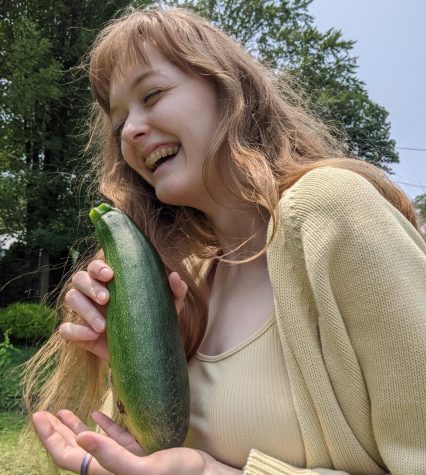Fidgeting, play and keeping the imagination young
I spent a lot of time watching my one-year-old niece this summer, during which I estimate we watched “Lilo and Stitch” no less than several dozen times. There were a few other movies in the regular mix — “Frozen” and “Moana “were also favorites — and later in the summer, we transitioned into “My Neighbor Totoro”, but Lilo truly dominated for a fortnight or so. You know how kids latch onto their favorite characters, television shows, movies and games, how strongly they can fixate on a single thing for sustained periods of time.
I remember being a child and being perfectly entertained just “playing outside” for hours, but what was it I actually did with that time? It is almost as though I don’t remember, but I know that the reality is that I probably did a number of things I would now find too utterly mundane to recall specifically: poking around in my backyard with a stick, turning over rocks to see the bugs hidden underneath, climbing the same couple trees and so on.
There is something I have lost since childhood, that keen youthful energy that can keep a kid locked into the same fantasy for days on end: imagination. A child’s imagination is, in the most literal sense of the word, wonderful. Perhaps it is the sheer newness of the unfamiliar, broad world that places this filter of wonderment across young minds, leaving them ample leg room for the imagination to stretch and fill in the blanks in their knowledge of the world around them. I like to think I still make good use of my imagination, but it seems that childhood is a special period during which these creative faculties are at their peak in terms of entertainment value.
Anyway, I have always enjoyed hanging out with children because I like their games. I babysat a bit in high school and as I mentioned, I now have a darling one-year-old niece. I find it so refreshing to take a break from my usual way of thinking about the world and play like a kid again. It seems that there are a lot of activities geared towards children that are centered on tactile engagement, like finger painting, sculpting with playdough, making sandcastles or mud cakes. These hands-on activities are very appealing to me; I like to keep my hands busy and have a hard time sitting still if they are not.
There is something to be said for the virtue of fiddling. I like to fiddle and twiddle with things: zippers, pen clickers, buttons, knobs and the likes intrigue me. I itch to fidget. I know this tendency can be annoying, but I also don’t think there is anything wrong with it. There are plenty others like me: people with antsy hands, people who get bored easily, impatient people, subconscious fiddlers, anxious twiddlers, people who could really jive with some playdough or fingerpaint.
Finger painting is of particular interest to me because, despite all instincts and sensory faculties telling me not to do so, I really want to eat paint. Something about it entices me — it is like a forbidden yogurt that taunts me. Thus finger painting is the next closest thing to my dream: if I really should not eat acrylic and chemical glop, then I will get by sloshing it about on paper with my bare hands like an animal.
Furthermore, when I finger paint, I just want to play with the paint. The physical experience is my sole interest, and so I do not care about the result. I have made many awful finger paintings in my adult life for no reason other than for the therapeutic value of making a colorful mess. This approach — one which I am inclined to believe that most younger children share — makes me feel more human, more like the bipedal, sentient mammal with a penchant for creation that I am, that we all are.
Touch is a crucial means by which babies learn and orient themselves in the world around them. The tactile experiences different objects give us are essential elements of what associations we form, how we identify things and how we describe the material world. Without making contact with the many substances that make up our world, we could have no sense of what it means to be fuzzy, sticky, silky, granular and so on. We could grasp the concept of what characteristics determine an object’s texture and appearance, but the subjective emotional phenomena that occur alongside the sensation itself would remain elusive, never to be terribly well-captured by words and sentences. Think of how our literature would suffer had we never acquired the visceral vocabulary of feel.

Peyton Britt is a senior philosophy major with a double minor in English and political science. This is her third and final semester serving as the Campus'...











